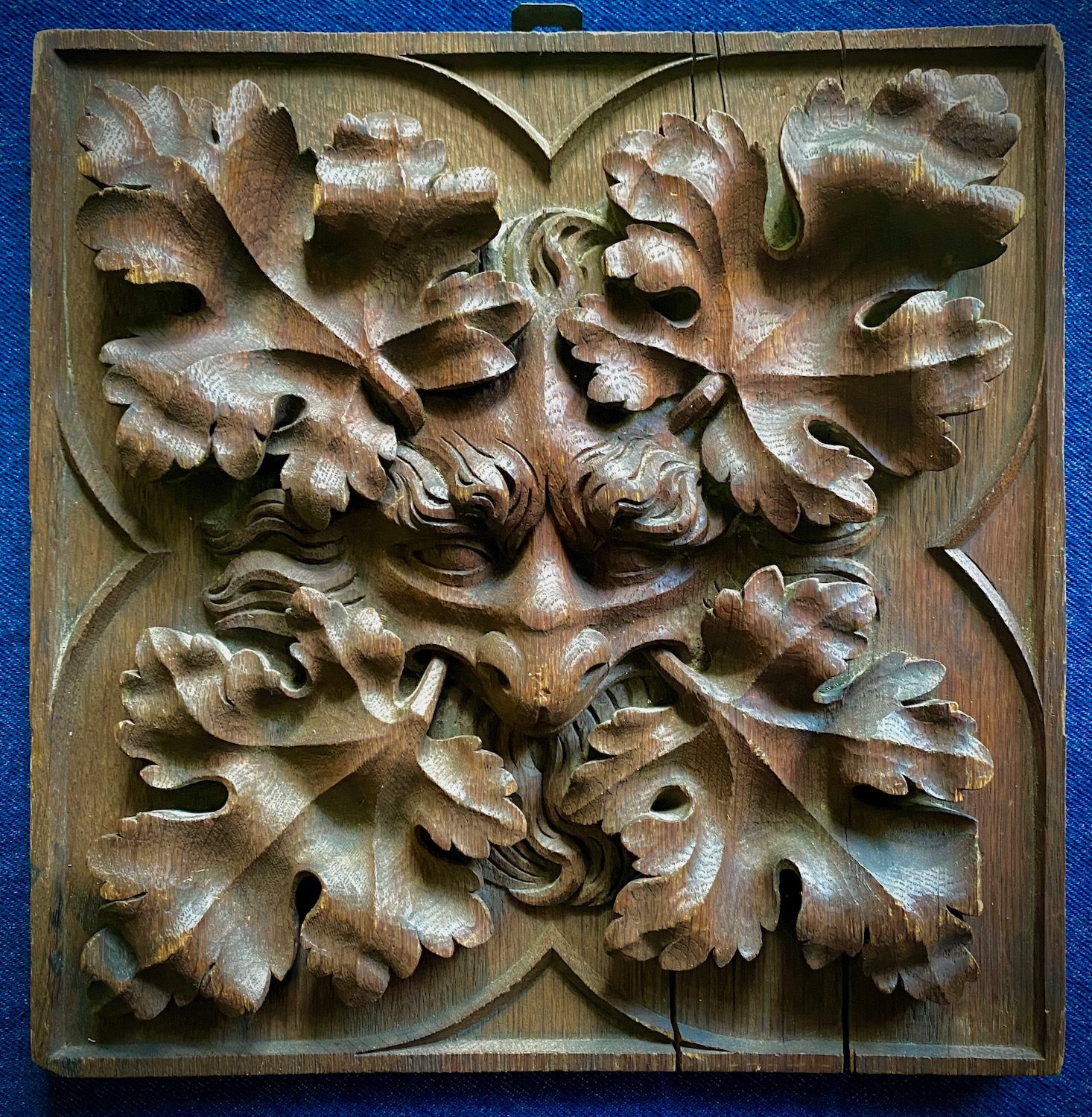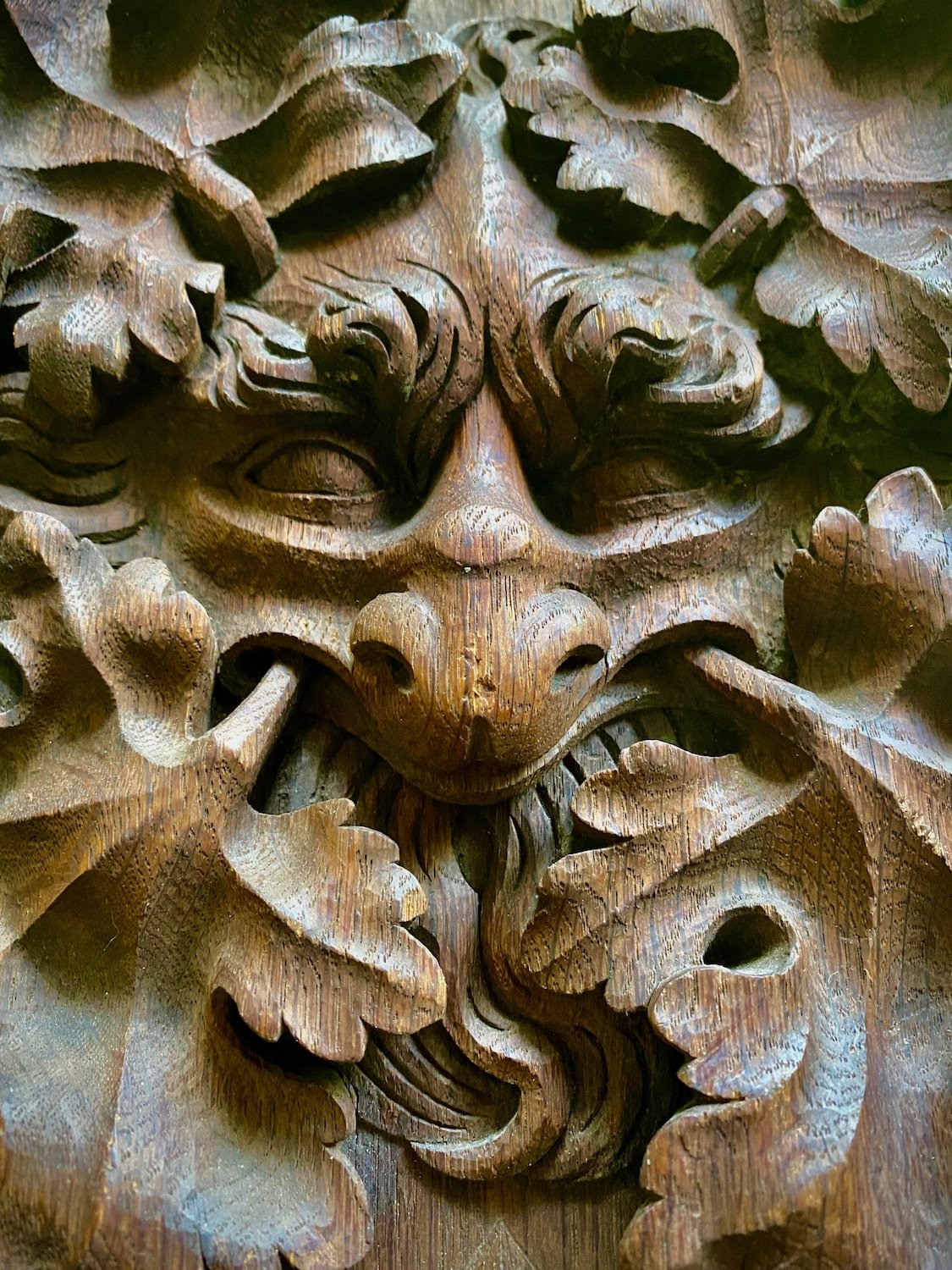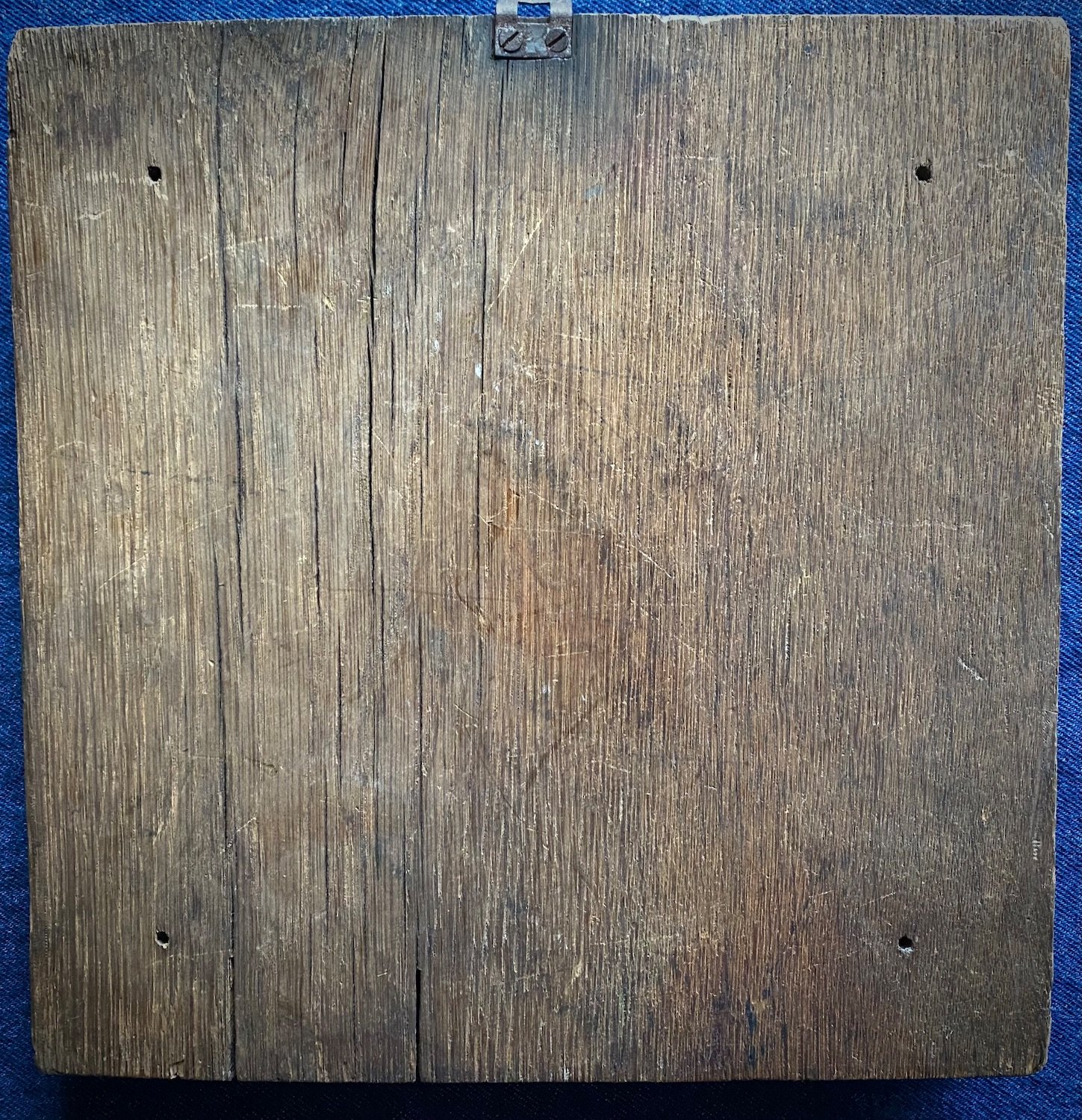 Image 1 of 4
Image 1 of 4

 Image 2 of 4
Image 2 of 4

 Image 3 of 4
Image 3 of 4

 Image 4 of 4
Image 4 of 4





Green Man Plaque
The “Green Man” is an archetype that has appeared in many cultures, usually as a symbol of rebirth, and the retention of wisdom across generations. He is commonly depicted as a disembodied face, either made of leaves, or completely surrounded by them. Often, leaves or tendrils are shown growing from his mouth, nose, eyes, ears, etc.
Ancient carvings representing the Green Man have been found in the Near East and in India. The motif appeared in Europe during the early Christian period, and became widespread through the Dark Ages and into the Renaissance. There was a huge revival of Green Man imagery during the Gothic revival and the Arts and Crafts era in Britain and America. That is likely the provenance of this wonderful example, which appears to have been an architectural element, or perhaps a furniture detail.
The Green Man archetype is also a recurring theme in literature and popular culture. Sylvan characters from the Green Knight, to Robin Hood, to Peter Pan have been associated with him. Other examples include both Tom Bombadil and the Ents in J.R.R. Tolkien’s “The Lord of the Rings,” as well as the Pan-like figure in Kenneth Grahame's 1908 classic “The Wind in the Willows” (we suggest rereading the chapter "The Piper at the Gates of Dawn"). The “Horned God” of contemporary Paganism can be said to fall within the Green Man tradition. Not to mention Bigfoot…
11” square, 1.25” deep. Hand-carved in deep relief from a single piece of oak, Originally held in place by four pegs in the back. Now fitted with a small loop for hanging.
The “Green Man” is an archetype that has appeared in many cultures, usually as a symbol of rebirth, and the retention of wisdom across generations. He is commonly depicted as a disembodied face, either made of leaves, or completely surrounded by them. Often, leaves or tendrils are shown growing from his mouth, nose, eyes, ears, etc.
Ancient carvings representing the Green Man have been found in the Near East and in India. The motif appeared in Europe during the early Christian period, and became widespread through the Dark Ages and into the Renaissance. There was a huge revival of Green Man imagery during the Gothic revival and the Arts and Crafts era in Britain and America. That is likely the provenance of this wonderful example, which appears to have been an architectural element, or perhaps a furniture detail.
The Green Man archetype is also a recurring theme in literature and popular culture. Sylvan characters from the Green Knight, to Robin Hood, to Peter Pan have been associated with him. Other examples include both Tom Bombadil and the Ents in J.R.R. Tolkien’s “The Lord of the Rings,” as well as the Pan-like figure in Kenneth Grahame's 1908 classic “The Wind in the Willows” (we suggest rereading the chapter "The Piper at the Gates of Dawn"). The “Horned God” of contemporary Paganism can be said to fall within the Green Man tradition. Not to mention Bigfoot…
11” square, 1.25” deep. Hand-carved in deep relief from a single piece of oak, Originally held in place by four pegs in the back. Now fitted with a small loop for hanging.
The “Green Man” is an archetype that has appeared in many cultures, usually as a symbol of rebirth, and the retention of wisdom across generations. He is commonly depicted as a disembodied face, either made of leaves, or completely surrounded by them. Often, leaves or tendrils are shown growing from his mouth, nose, eyes, ears, etc.
Ancient carvings representing the Green Man have been found in the Near East and in India. The motif appeared in Europe during the early Christian period, and became widespread through the Dark Ages and into the Renaissance. There was a huge revival of Green Man imagery during the Gothic revival and the Arts and Crafts era in Britain and America. That is likely the provenance of this wonderful example, which appears to have been an architectural element, or perhaps a furniture detail.
The Green Man archetype is also a recurring theme in literature and popular culture. Sylvan characters from the Green Knight, to Robin Hood, to Peter Pan have been associated with him. Other examples include both Tom Bombadil and the Ents in J.R.R. Tolkien’s “The Lord of the Rings,” as well as the Pan-like figure in Kenneth Grahame's 1908 classic “The Wind in the Willows” (we suggest rereading the chapter "The Piper at the Gates of Dawn"). The “Horned God” of contemporary Paganism can be said to fall within the Green Man tradition. Not to mention Bigfoot…
11” square, 1.25” deep. Hand-carved in deep relief from a single piece of oak, Originally held in place by four pegs in the back. Now fitted with a small loop for hanging.